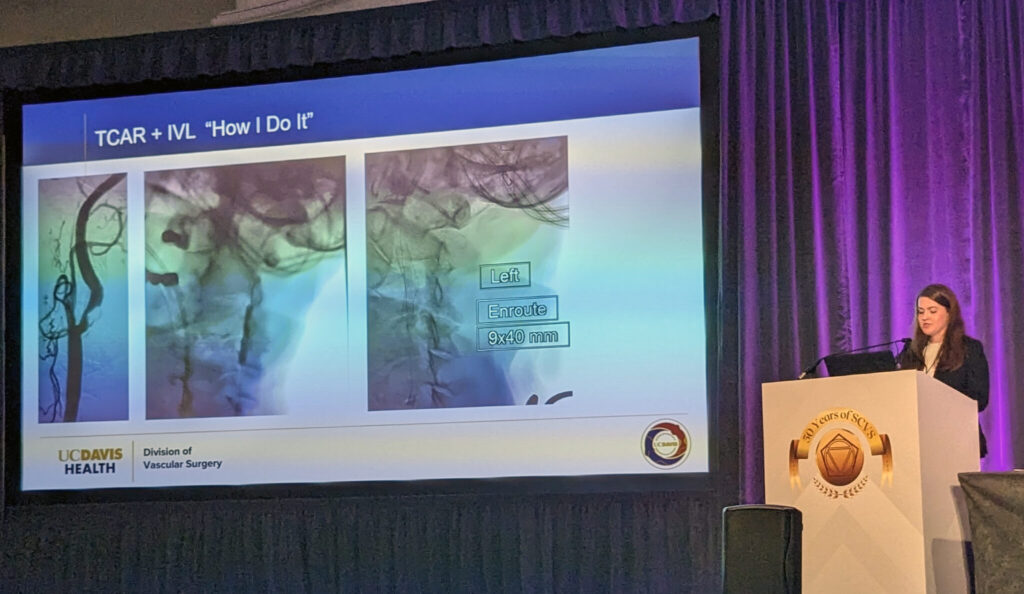
Lithotripsy may hold the key to enabling more carotid artery disease patients who require calcification treatment to undergo stent placement via a transcarotid artery revascularization (TCAR) procedure, as per single-center experiences presented at the recent Society for Clinical Vascular Surgery (SCVS) Annual Symposium in Miami (March 25–29) by Kathryn DiLosa, MD, a University of California (UC) Davis, Sacramento, vascular surgery resident, alongside principal investigator Misty Humphries, MD, interim chief of the division of vascular surgery at UC Davis.
In cases of circumferential or eccentric calcification, TCAR is precluded and carotid endarterectomy (CEA) often becomes the preferred approach—however, in patients considered “high risk” due to their anatomy or prior surgeries, for example, “another alternative exists,” the speaker said.
Detailing the use of intravascular lithotripsy (IVL) prior to a TCAR procedure, DiLosa noted that predilation angioplasty may be required to allow passage of a lithotripsy balloon, and the balloon “should be sized to fully oppose the vessel wall, but not extend past the intended coverage area.”
She further stated that lithotripsy technologies have been used in the treatment of kidney stones previously, and are now shifting into the endovascular space.
The speaker also reported a 100% rate of technical success with this approach at her institution, across a total of seven patients, with comparable procedural and flow-reversal times to standard TCAR, and no observed complications within 30 days of the procedure. “However, a larger cohort [of patients] is still needed to confirm safety,” DiLosa said.
Responding to an audience query on how lithotripsy is able to successfully break up calcium without leading to embolization—a concern she admitted to having initially herself—DiLosa added that “all of the available literature has demonstrated that it is able to fracture the calcium, within the wall, without it embolizing from the wall.”
Briefly touching on the available literature regarding pre-TCAR lithotripsy, she stated that case studies—but no significant case series—are available at this point, although she and her colleagues are currently compiling a multi-institutional cohort including more than 50 patients.
“This is definitely for a specific patient population—those who cannot tolerate endarterectomy, but that would need the benefit of calcification [treatment],” DiLosa concluded.












